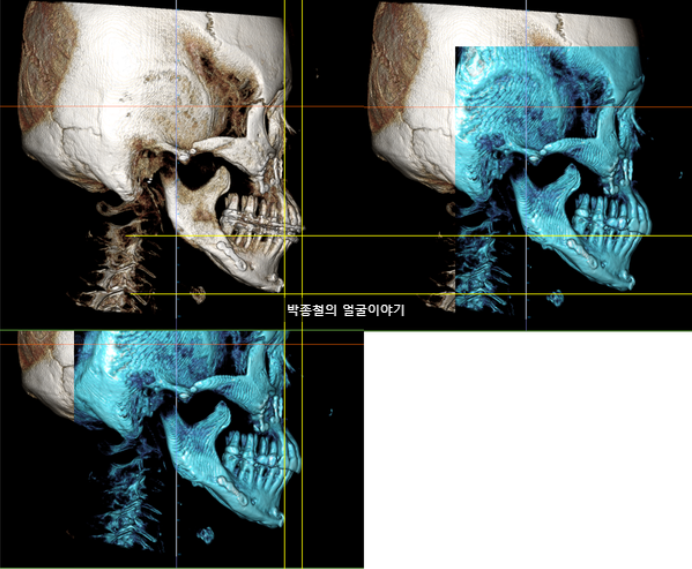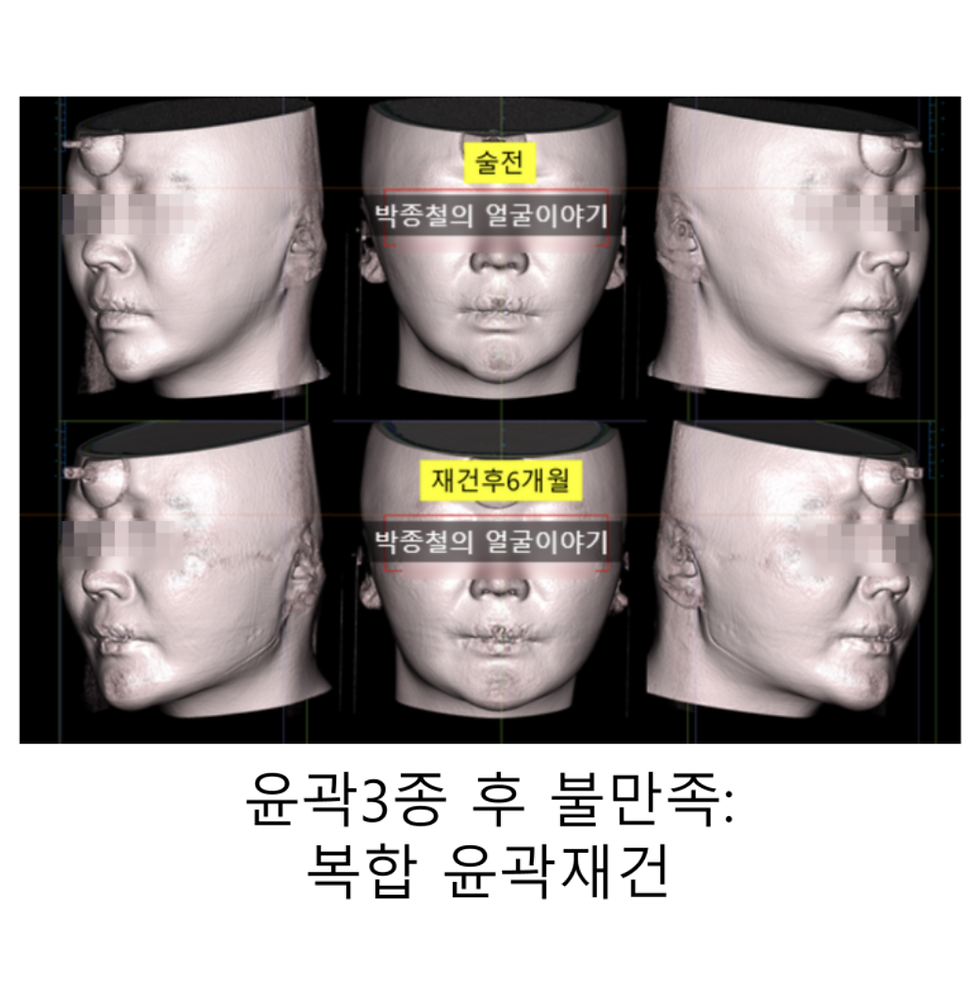Midlife Makeover: 11-Year Journey After Double Jaw Surgery and Metal Plate Removal
- Dr. Park

- Feb 8
- 3 min read
Can Metal Plates Be Removed 10 Years After Double Jaw Surgery?
As an oral and maxillofacial surgeon, I often receive inquiries about the possibility of removing metal plates 10 or more years after double jaw surgery (orthognathic surgery). In this post, I will provide information on this topic and discuss important considerations.
Case Presentation
A 50-year-old patient who underwent double jaw surgery for aesthetic purposes 11 years ago recently underwent successful removal of the metal plates. I will share their skeletal photos, 11-year follow-up, and plate removal process.
1-year post-surgery: The maxilla was moved superiorly, and the mandible was moved posteriorly, resulting in a smaller facial appearance.

Double Jaw Surgery in Middle Age 11-year post-surgery: Compared to the 1-year mark, the occlusion showed slight improvement, and the mandible exhibited a subtle counterclockwise rotation.

Double Jaw Surgery in Middle Age: 11-Year Follow-Up
Detailed Analysis of 11-Year Changes

The mandible slightly shortened due to rotation, but the change was clinically insignificant.
Maxillary incisor extrusion (1.2mm) and mandibular rotation led to the current overbite.
As the patient did not visit immediately after orthodontic treatment, it is unclear whether the incisor extrusion resulted from orthodontic forces or physiological changes. However, many patients experience incisor extrusion after treatment completion.
Forehead Silicone Implant

Evaluation of the silicone forehead implant revealed no bone erosion over the 10-year period. Instead, new bone formation was observed in the surrounding area.
Bone resorption due to implants seems related to the pressure exerted by surrounding soft tissues. In particular, continuous hyperactivity of the mentalis muscle after chin implant insertion may lead to bone resorption in some individuals.
Careful evaluation of individual patient conditions is crucial before implant procedures.
Considerations for Metal Plate Removal
While metal plates in the double jaw surgery area can usually be removed, the zygomatic arch region requires special attention.

Metal Plate Removal The temporal branch of the facial nerve runs close to the metal plate fixation site in the zygomatic arch. Over time, bone can grow over the screws, making removal challenging.

The temporal branch of the facial nerve runs close to the metal plate fixation site in the zygomatic arch Removing the screws may necessitate scraping away bone and prolonged retraction of soft tissues containing the facial nerve, increasing the risk of nerve damage.

Removing the screws may necessitate scraping away bone and prolonged retraction of soft tissues containing the facial nerve, increasing the risk of nerve damage. Therefore, removal of metal plates in the zygomatic arch should be carefully considered, and patients should be aware of the potential difficulties.
Soft Tissue Changes After 11 Years

Surprisingly, the philtrum (area between the nose and upper lip) shortened, despite no surgical intervention in this area.
Enlarging the nostrils can elevate the subnasale, making nasolabial folds more prominent.
When assessing midfacial length, muscle activity should also be considered.
With proper management, skin elasticity can be well-maintained for 11 years after double jaw surgery, even at the age of 50.

Soft Tissue Changes After 11 Years After Double Jaw Surgery
Conclusion
Metal plate removal is possible 11 years after double jaw surgery, but the zygomatic arch area requires careful evaluation. If you have any questions, please do not hesitate to ask.
Midlife Makeover: 11-Year Journey After Double Jaw Surgery and Metal Plate Removal



Comments